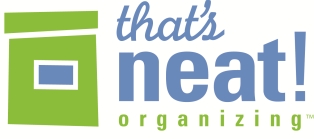Have you been watching a certain show that is making you want to redo your pantry, garage, and every closet with clear bins?
While I’ve been using containers and labels for years, lately I’ve found myself considering reorganizing my entire pantry and kitchen with new bins. Maybe after 7 months of living and working at home all.the.time I’m seeing my kitchen in a new way. Or maybe it’s the relentless ads from certain stores attempting to convince me to buy containers and watch a new home organizing show. Or it could be my ongoing need to be able to control something during this time when so much seems out of control.
Containers can work:
Clear and labelled containers are very helpful for finding things and putting them away.
Sometimes there is a specialized container that solves a particular problem.
I agree that when our space looks great and we use containers we like to look at, we are more likely to be motivated to keep up the organizing system.
But I also know that organizing is not about the containers.
Organizing is about how we interact with our stuff. Containers don’t solve the underlying issues. You still need to deal with the stuff.
That’s why any sustainable organizing strategy has to start not with the containers, but with the harder work of making decisions: keep, toss, recycle, donate? And that’s how I work with clients. We go through the items and I support clients as they make the decisions. Only then will they know how many mugs or books or LEGOs they have, and can determine if a new or specialized container is needed. Clients often have some bins, baskets or other containers already, or we can get creative to repurpose other things already in the space. (See how I used a shoe shelf in my dining room, for example.)
While I’m not anti-container by any means, remember that buying 20 new clear containers probably won’t solve your organizing issue in the long term. Don’t forget to first consider the stuff you are putting in the container.





